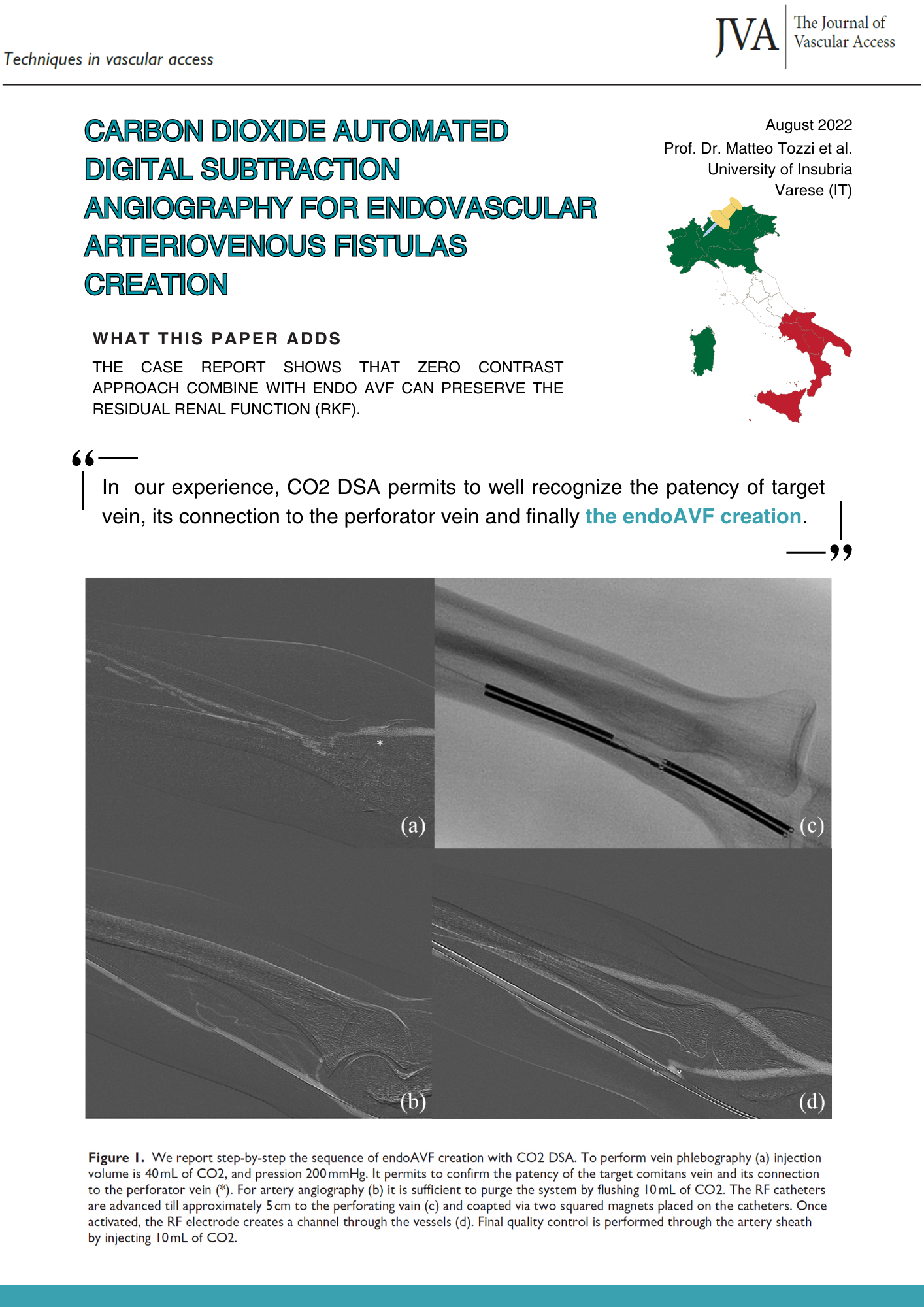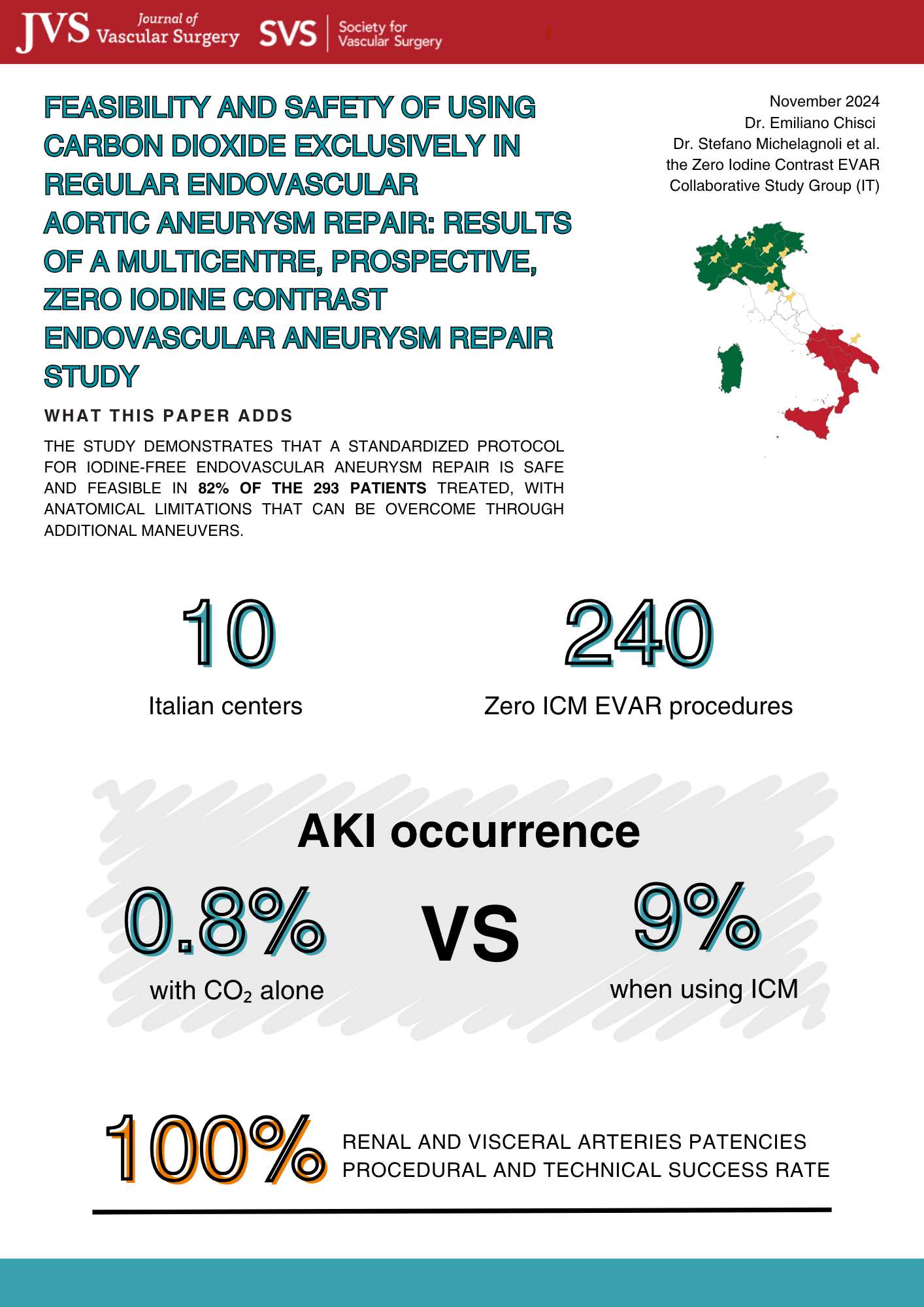Paper
Feasibility of CO2 angiography in peripheral arterial interventions
Carbon dioxide (CO2) gas is an established alternative to iodine contrast during angiography in patients with risk of postcontrast acute kidney injury and in those with history of iodine contrast allergy. Different CO2 delivery systems during angiography are reported in literature, with automated delivery system being the latest. The aim of this study is to evaluate the safety, efficacy, and learning curve of an automated CO2 injection system with controlled pressures in peripheral arterial interventions and also to study the patients’ tolerance to the system. From January 2018 to October 2019 peripheral arterial interventions were performed in 40 patients (median age-78years, interquartile range: 69–84years) using an automated CO2 injection system with customized protocols, with conventional iodine contrast agent used only as a bailout option. The pain and tolerance during the CO2 angiography were evaluated with a visual analog scale at the end of each procedure. The amount of CO2, iodine contrast used, and radiation dose area product for the interventions were also systematically recorded for all procedures. These values were statistically compared in 2 groups, viz first 20 patients where a learning curve was expected vs the rest 20 patients. All procedures were successfully completed without complications. All patients tolerated the CO2 angiography with a median total pain score of 3. Automated CO2 angiography is technically feasible and safe for peripheral arterial interventions and is well tolerated by the patients.
Contact us for more information.
.png?width=2000&height=1415&name=Progetto%20senza%20titolo%20(7).png)


